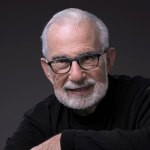When someone young and famous has a stroke, it makes the headlines. However, there is a lesson to be learned for all of us. Why did the 45-year-old actor have a stroke and what does it mean for us mere mortals? When we look for a specific cause of stroke in young adults, we find that, despite all of our tests, one third are “cryptogenic,” meaning that no specific cause can be identified.
Worldwide, over 2 million young adults (ages 18-50 years) have a stroke each year. Unfortunately, stroke in this group in the United States has increased significantly in the last decade, particularly among African Americans. When we are young, we often don’t pay attention to the stroke risk factors that also apply.
Managing Risk Factors
Vascular risk factors have increased in young adults. Over the past decade, hypertension, hypercholesterolemia, diabetes mellitus, smoking and obesity have become a greater problem in this population. Combined, these risk factors account for 80 percent of ischemic stroke (clots in blood vessels) in young adults. The increase in this population is surprising, unfortunate and alarming. We need to educate young people that they too are at risk for stroke and heart disease.
Cause of Stroke in Young Adults
Some of the unusual causes of stroke in young adults are:
Migraine: The role of migraine in the etiology of stroke is controversial and studies reveal mixed results. However, if you are woman with migraine, taking birth control pills and smoking— STOP!
Illicit drug use: It is estimated that 5 percent of all people age 15-64 years old use recreational drugs at least once a year. Cocaine has the highest incidence of stroke but cannabis, opioids and ecstasy are also associated with stroke.
Pregnancy: Women are most vulnerable in their third trimester to six weeks post-partum. There are many causes, but most are possibly related to a hypercoagulable state in the third trimester.
Cardiac embolism: There is a 25 percent prevalence of a hole in the heart, Patent Foramen Ovale (PFO), in the stroke-free population. The debate is trying to determine if the PFO is the cause of a person’s stroke. The decision whether to consider PFO closure combined with antiplatelet therapy versus antiplatelet therapy alone is on a case-by-case basis to be decided based on age and other clinical features. Arrhythmias such as atrial fibrillation as a cause of cryptogenic stroke have a much lower incidence in young adults (3 percent) compared to the elderly (16 percent).
Young people need to pay the same attention to their risk factors as our older population. You must know your blood pressure, cholesterol level and blood sugar. This is the week to get them checked. It is time to kick education into high gear and reduce your risk.
The content of this site is for informational purposes only and should not be taken as professional medical advice. Always seek the advice of your physician or other qualified healthcare provider with any questions you may have regarding any medical conditions or treatments.




